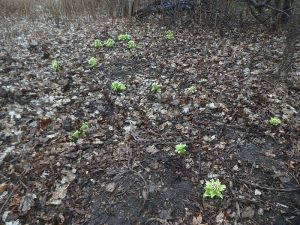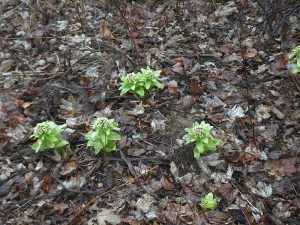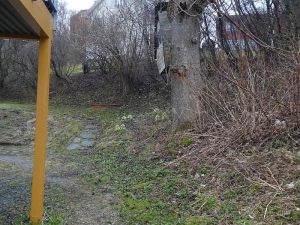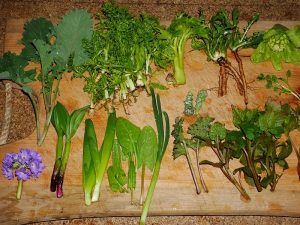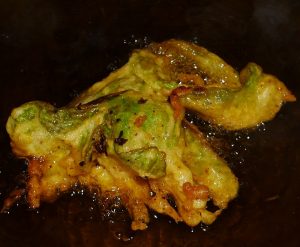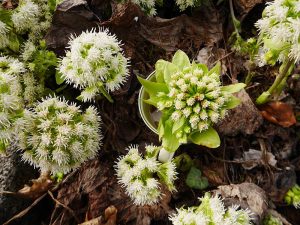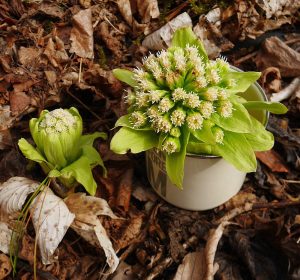Fuki (Petasites japonicus) is a popular spring vegetable in Japan and Korea. It has also been introduced as an ornamental in Europe and in North America as a food plant for the Japanese population there. In Hu’s Food Plants of China it says that it’s cultivated to meet the market demand of the Japanese residents (Shanghai and Nanjing). During my study trip to Japan in spring 2016, the flower buds and young leaf stalks were available in the wild edible (sansai) section of supermarkets! It was a common site to see an area of fuki set aside near to houses!
At the end of February I gave a talk about my trip to Japan for the first time and showed this slide of supermarket leaf petioles, flower buds and fuki tempura which I was served!
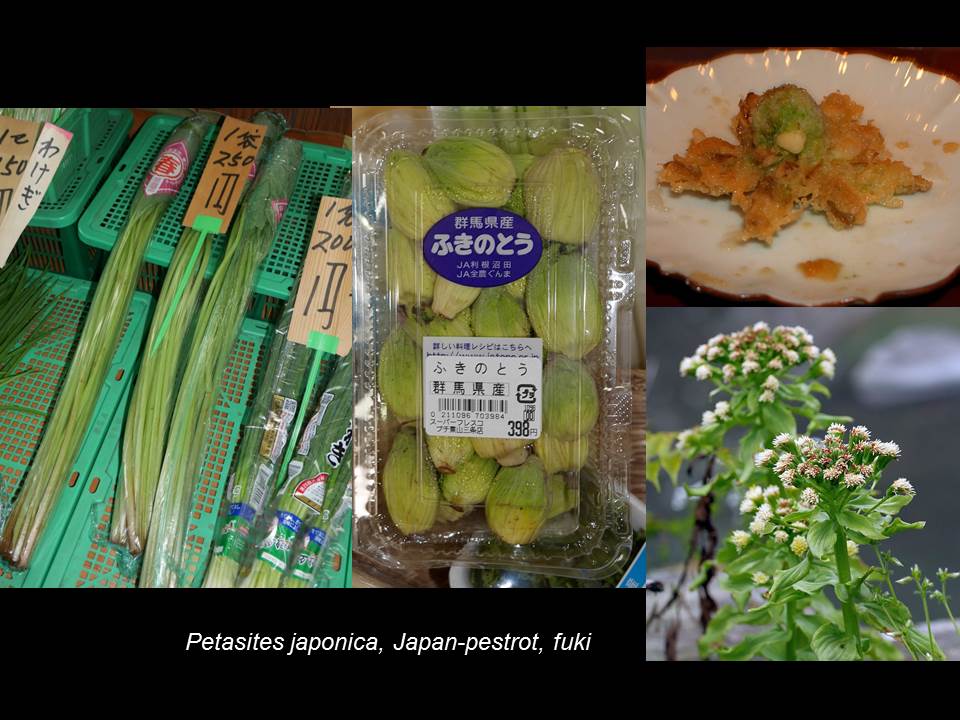
At the talk, one of the audience was Ingunn Moslet. She contacted me afterwards as she was sure that she had seen this plant growing in the centre of Trondheim. We therefore agreed that we would meet in the spring to check it out. Yesterday, 3rd May 2018, I met Ingunn in Bakklandet and she took me to the site which seemed to be an old overgrown garden (there were old redcurrant bushes on the edge of the site). Upon seeing the flowering shoots I wasn’t in doubt that this was fuki and not similarly white flowered Petasites albus from the alps which probably has higher levels of bitter alkaloids. We counted 38 flowering heads and 10 more in another location in a nearby garden. As it was at perfect stage to eat, I took one shoot with me to try that evening and a second more developed flower to compare with Petasites albus (grown contained in a pot in my garden for the bees for many years) and my own fuki (from a wild stand in Rogaland). Below is an album of pictures from our visit to the site, the fuki pakora I made last night and comparisons of the flower heads of P. japonicus and P. albus!
Although often treated as an invasive and noxious weed, I would argue it is also a valuable addition to our flora as it flowers early and therefore is a valuable source of nectar for butterflies and bees, as well as being a great perennial vegetable, so instead of spraying it with toxic chemicals like Roundup let’s love it instead and limit it by harvesting it!
See the film below which I took in the Toronto botanical garden in April 2017!
Discovering the fuki patch in Trondheim:

